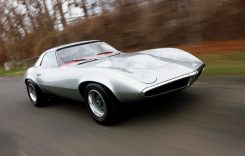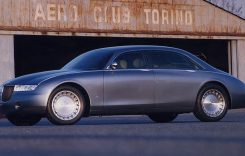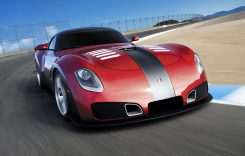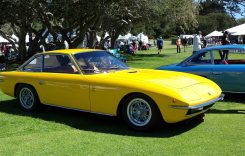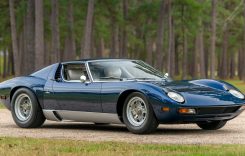The 57th Frankfurt International Motor Show (IAA) saw the concept vehicles of the future. Mercedes-Benz introduced the new research project F300 Life Jet, which was lauded to be a novel and intriguing concept. This study involves the combination of motor cycle and motor vehicle technology.
The concept is a three-wheeled motorcycle which offers the speed of motor racing but combines the comfort and safety of a saloon car. Offering a newly designed active tilt control system, the front wheel and body of the two seater vehicle naturally lean into a bend when cornering. With the F300, you can experience the fast pace of a bike, but with safety features built in to protect occupants.

This tilt control improves the driving experience for occupants also. Unlike regular motorcycles, there is no need to brace yourself and lean into the bend when cornering. The F300 takes corners in stride and seems to flow naturally with each turn.
The occupants are barely aware of the impact, making for comfort driving in the trickiest of corners. The system works by electronic commands that are sent to a hydraulic cylinder in the front axle. This works in conjunction with the steering angle to push one of the two spring struts outwards to create the required degree of lean.
With the maximum capability of a 30 degree angled tilt, the vehicle seemingly reads the road conditions and thinks for itself! The F300 comes with some serious bit of kit offerings too. The intelligent electronic system assesses the vehicle’s steering angle, speed, yaw and acceleration to determine the precise angle of tilt required at any given time. This ensures maximum safety and is a highly efficient way to drive the vehicle.
The new European Driving Cycle (NEDC) found that the engine uses only 5.3 litres of fuel for every 100 km per hour which will make it appealing to many. The designers used the new Mercedes-Benz A-Class 1.6 litre engine which equates to 75 kW/ 102 hp. Using all four cylinders, the vehicle can accelerate to 211 km/h and in doing so, it is able to complete with roadsters or even top range sports cars. The two seater vehicle has an aluminium chassis which is a feather weight at only 89 kilograms.
The hardtop aluminium and transparent plastic roof splits into two parts and can be removed to make the vehicle even lighter. It also enables a more ‘motorcycle’ feel to the driving experience. The process is quick to complete and the rood can then be conveniently stored in a rear wheel compartment.
This also ensures the vehicle is ‘all weather’ ready. The driver’s door opens in an upward swivelling motion while the passenger’s door opens using a similar swivelling motion. The F300 uses space saving neon lighting technology for its brake lights, side marker lights and direction indicators.
There is an inbuilt automatic sensor that activates the low beam at dusk or when entering a tunnel. The F300 moves from plan to concept at the Frankfurt International Motor Show. Visitors will be able to get up close and personal with the vehicle and put questions to the Daimler-Benz design team.
The public feedback will be paramount to Daimler-Benz who will assess visitor reactions and ultimately decide whether to make any adaptations and if the public is ready for the concept car to go into production.
